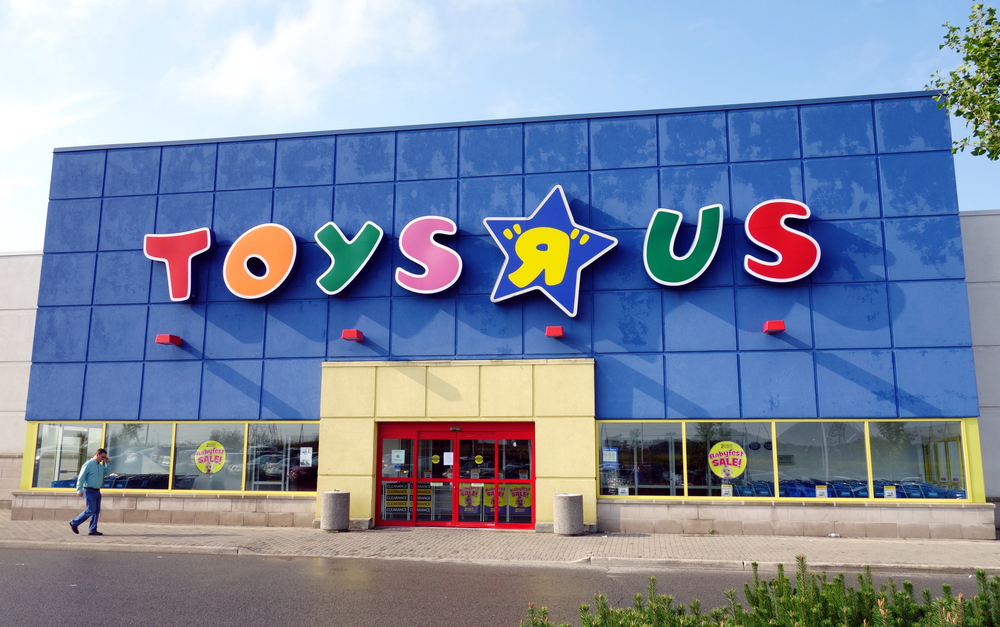
Originally posted by Adam Smith on 29th September 2017.
Another week; another bankruptcy. This time children’s retail giant Toys R Us.
It will only be a matter of days before unimaginative digital agencies and self-appointed consultant charlatans start leaping on the back of this to strengthen the argument around their favourite term… ‘Disruption’.
But there is a fundamental difference between ‘disruption’, and remaining relevant. You don’t have to be disruptive to remain purposeful to your customers. Toys R Us didn’t need to disrupt, they didn’t even need to be super innovative – they just needed to keep up and most importantly, understand and leverage what they had.
I guess that’s why I dislike the term ‘disruption’ – it’s bollocks. There’s a growing trend that brands need to be constantly innovative and change the market as the only way to grow. While that’s true to an extent, let’s not forget that its customers at the heart of everything – and as long as you service them in a more convenient way than your competitors, that matters more. Innovation isn’t always 100% synonymous with customer convenience.
When I heard about Toys R Us, I Googled to see if they even had a Chief Innovation Officer. What would someone in that role be doing, and why didn’t they succeed?
The Google search led me to this article on CIO.com.
An article from May 2016, when Toys R Us hired their first CIO for a while, Phil Newmoyer. Within moments it’s possible to spot they were heading on a trajectory destined to fail. Apparently, Phil would ‘lead the IT portion of our ecommerce platform’.
OK, so that’s balls up number one. Toys R Us has acres of real estate, yet their CIO wants to take Amazon on head on with ecommerce?
“Ecommerce transition is of paramount importance laying a foundation for the company’s future digital activities”
states Newmoyer. Really? You’re trying to reinvent a brand that isn’t at all known for online, and completely ignore the fact that you have a very unique opportunity that Amazon doesn’t. You have at your disposal real life stores and a brand heritage that fills most people with happy nostalgia. How about using digital and physical together? Why not combine the convenience of digital with the value of real-world demonstrations/activities? Retail is great for experiencing a product, digital is great for the convenience of buying it.
He goes on to explain
“Toys R Us already offers in-store pickup of online orders”.
Eh? That’s the exact opposite of what makes the purchase easy or enjoyable for a consumer. You’re making them experience the purchase online (poorer than an in-store exploratory/discovery experience), and then suffer the inconveniences of getting in the car and collecting (poorer than an online Prime Now experience).
Finally, a plan was to “implement digital displays in stores to keep children engaged as their children shop”. THEY’RE IN A TOY STORE! They’re stuck to digital screens all of their lives! This is the one chance to capitalise on giving children a memorable physical experience that Amazon CAN’T offer, and you want to show them a digital advert??
The point I guess I’m trying to get across is not to piss about with digital innovation for innovation’s sake. No one at any point mentions the customer, what they want. No one at any point viewed the market landscape and chose sensibly what areas to battle and fight for. And as a result of this misfire, would-be customers continued to opt for the convenience of Amazon, or the supermarket.
A complete dinosaur, with poor vision and no idea of how to make digital work hard by having it complement their biggest asset.
My point is, I think many people will approach this from an innovation and disruption angle as another retailer bites the dust. Whereas I see it as just a simple failing to understand their strengths, understand their weaknesses, and having a knowledge and understanding of where to focus.